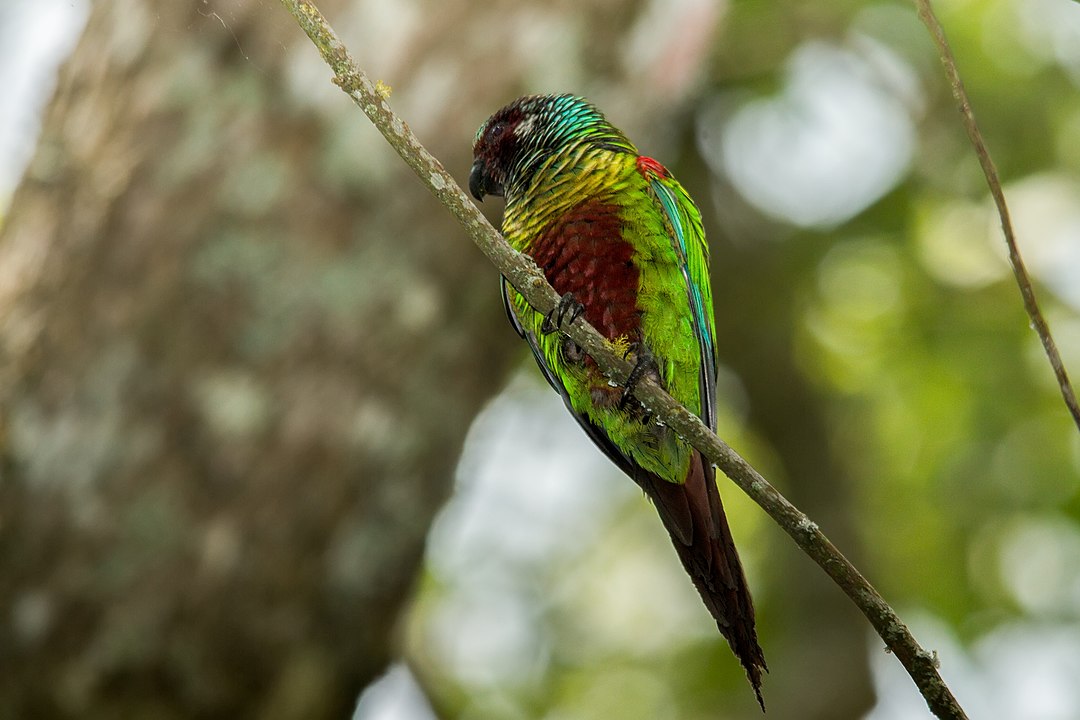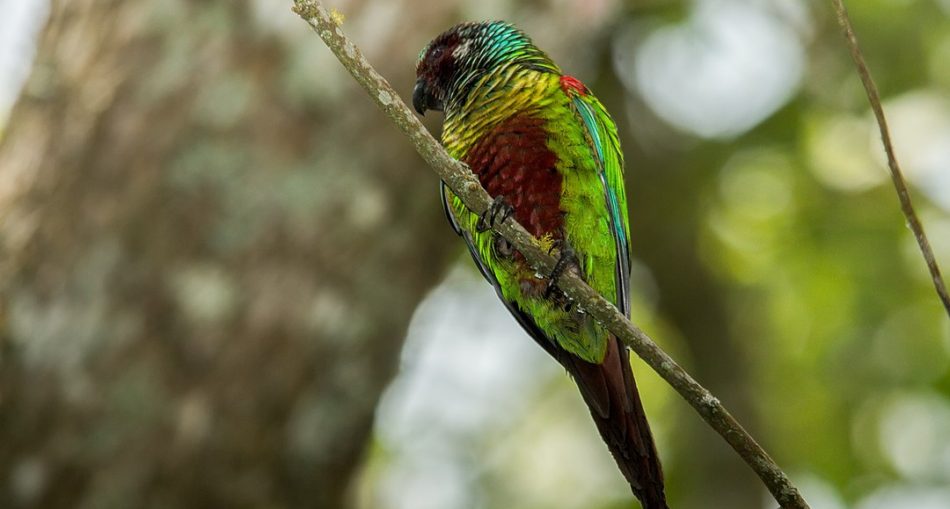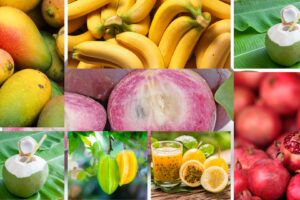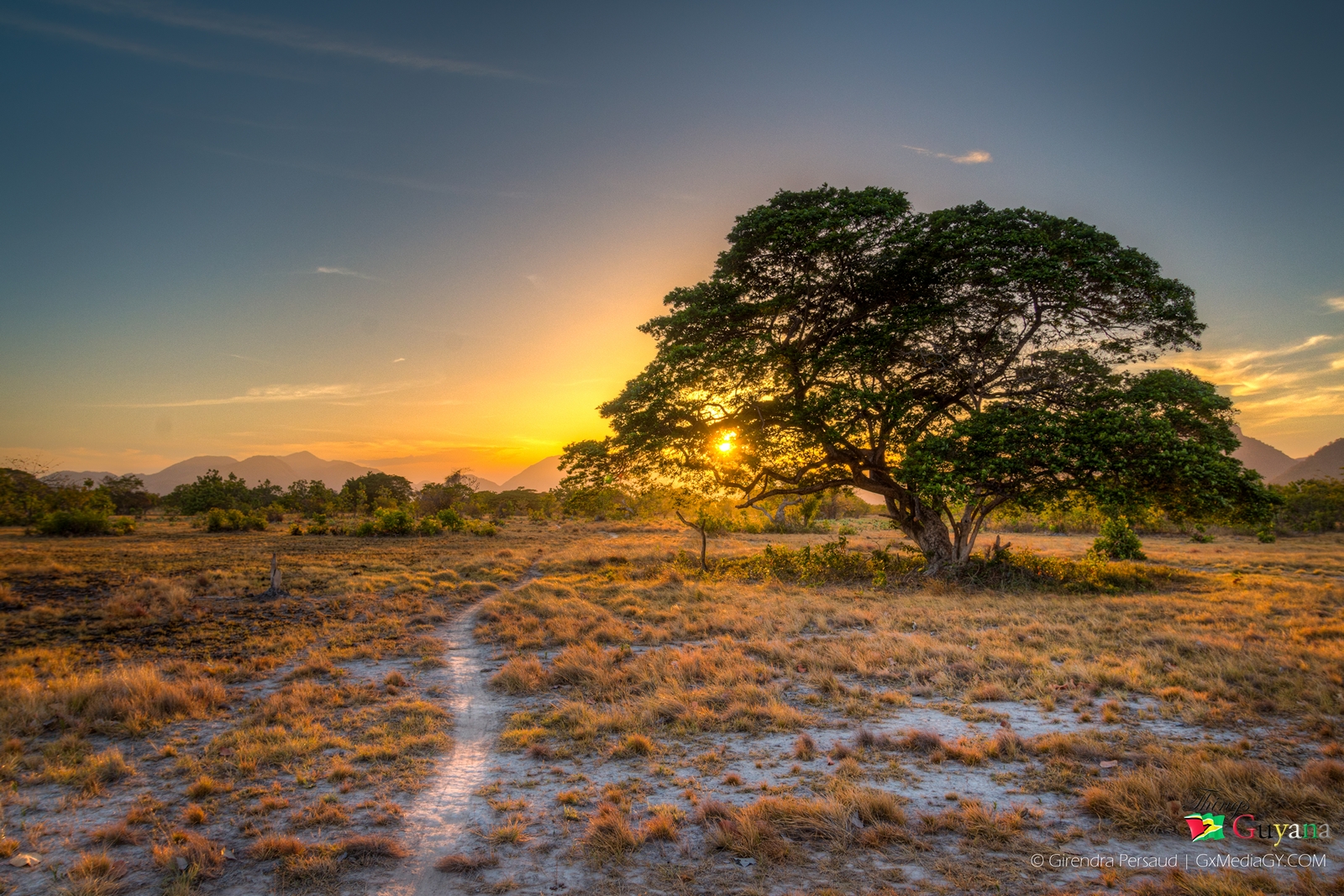The Painted Parakeet is a conure, like the Sun Parakeet, which are small or medium-sized, parrots bursting with energy. Painted Parakeets, also known as Painted Conures and Blue-winged Conures, love to cuddle but can be quite obnoxious at times. Known for their exquisite beauty and loud personalities, Painted Parakeet are prized pets but the species may be endangered by this. The scientific name of the Painted Parakeet is (Pyrrhura picta) and there are about eight subspecies of the bird. These are the Pyrrhura picta amazonum, Pyrrhura picta caeruleiceps, Pyrrhura picta eisenmanni, Pyrrhura picta emma, Pyrrhura picta lucianii, Pyrrhura picta microtera, Pyrrhura picta orinocensis, Pyrrhura picta picta, Pyrrhura picta roseifrons, andPyrrhura picta subandina.
Male and female Painted Parakeets look the same, sharing the same vibrant, multicoloured plumage, so it may be difficult to identify them. These birds often congregate in small feeding groups, where you may also find bonded or mated pairs together. They also intermingle with Golden-winged Parakeet (Brotogeris chrysopterus) and Pearly Conure (Pyrrhura perlata) at water places where they bathe and feed on the mineral-rich earth.

Painted Parakeet – Photo By Fernando Flores from Caracas, Venezuela – Venezuelan Parakeet | Perico Pintado ( Pyrrhura picta emma), CC BY-SA 2.0, https://commons.wikimedia.org/w/index.php?curid=40528266
Description Of The Painted Parakeet
This parrot is about eight and a half (8 1/2) inches or twenty-two (22) cm in length. Painted Parakeets typically have dark brown or brown irises but the Pyrrhura picta caeruleiceps, Pyrrhura picta eisenmanni have cream, irides. Similarly to birds of the Pyrrhura genus, its plumage is primarily green with splashed of different colours. The crown and nape are an exquisite blue-green colour white feathers on their ears are white or yellowish. The cheeks range from dusky-maroon to maroon-red. The base of its light feathers (coverts) and edges of the primary feathers are blue. With the exception of subspecies Pyrrhura subandina and Pyrrhura eisenmanni, the wings of the adults are lined in red. The feathers on their chest are dark red, the edges of which are lined with white. Their abdomens are dark red while the tips of their tail, as well as their rump and middle belly, are a beautiful maroon red.
Scientific Classification Of The Painted Parakeet
- Kingdom: Animalia
- Phylum: Chordata
- Class: Aves
- Order: Psittaciformes
- Family: Psittacidae
- Genus: Pyrrhura
- Species: P. picta
Habitat Of The Painted Parakeet
Painted Parakeets (Pyrrhura picta) are native primarily to the northeast of Brazil, (north of the Amazon River) south of Venezuela and in the Guianas, including Guyana.
Diet Of The Painted Parakeet
In the wild, the diet of Painted Parakeets consist typically of fruits and berries, and most plant matter, flowers seeds. They also eat insects and their larvae. Sometimes they consume algae found on the surface of some ponds. Painted Parakeets in human care needs to be fed a lot of fresh fruits and vegetables, primarily green food. Flowers and buds are recommended as well. In addition to this, a mix of seed (sunflower seeds, hemp, oats, safflower, canary grass seed) should be available.
Behaviour Of The Painted Parakeet
Painted Parakeets can be found in about five to twelve groups of (5-12) birds but the number can increase, particularly in feeding areas. The birds love tall and dense trees and like to be active. Their calls are loud but vary. It is a brief “eek” when they are in flight. However, their contact call is a loud “peeah“. At rest, they make harsh “kleek-kleek“ calls. Their calls draw attention to them, but they are difficult to spot because of their plumage which easily camouflages them.
Reproduction Of The Painted Parakeet
The breeding season of Painted Parakeets is around March to June in Panama and Columbia, February to April in Suriname and from July to December in Brazil and Bolivia. They breed once annually but two breedings are possible. These birds usually make their nest in tree stumps and cavities of living and dead trees, sometimes very far from the ground. During breeding time, these winged creatures are very protective of their nesting area and can even become very aggressive. The size of their clutch ranges from four to nine (4-9) eggs but most tend to be infertile. Incubation of the eggs are divided between the parents and lasts for a period of twenty-one to twenty-three (21 – 23) days. The hatchlings being to grow feathers at about fifty (50) days old. The parrots are able to breed when they are about two (2) years of age.
4 Interesting Facts About The Painted Parakeet
- Apart from the breeding season, Painted Parakeets may be a part of a colony system of the same species of even subspecies.
- If these birds are kept as pets with other birds, during the breeding season they should be separated due to their aggressive, eating behaviour.
- Painted Parakeets are very sociable and curious birds.
- They can be trained easily.
About The Painted Parakeet
The Painted Parakeet is an exotic conure, consisting of several subspecies. Native to the northern parts of South America, these birds thrive in areas with a lot of tall, dense trees. Painted Parakeets may be kept as pets and are surprisingly sociable birds. However, they are difficult to breed but make great pets nevertheless.
Article References
- https://en.wikipedia.org/wiki/Painted_parakeet
- https://www.beautyofbirds.com/paintedconures.html
- http://www.exoticwings.com/info/pyrrhura-conures/pyrrhura-picta/painted-conure.html
- https://animal-world.com/encyclo/birds/conures/ConuresProfile.htm
- https://www.parrots.org/encyclopedia/painted-conure
- https://www.mindat.org/taxon-2479831.html







